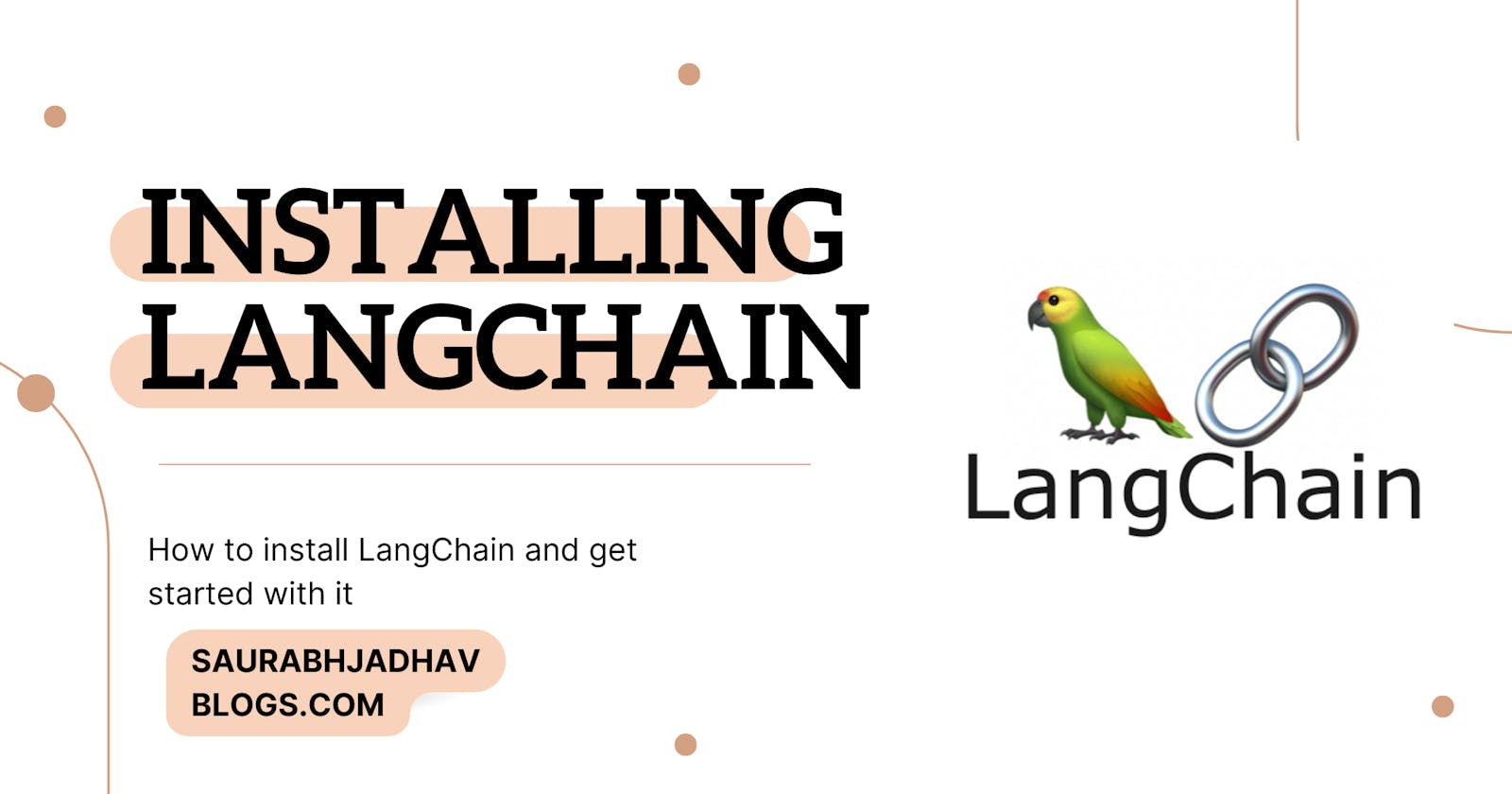Table of contents
Introduction
LangChain is an open-source framework for developing applications powered by large language models (LLMs). It provides a high-level API that makes it easy to chain together multiple LLMs, as well as other data sources and tools, to create complex applications.
This blog post will show you how to install LangChain and get started with it. We will cover the following topics:
How to install LangChain using Pip, Conda, or from source
How to import the
langchainmoduleHow to create a chain
How to add steps to a chain
How to execute a chain
How to get the results of a chain
I hope this blog post will be helpful for you if you are interested in learning how to use LangChain.
Let's get started!
Installing LangChain
There are three ways to install LangChain:
Using Pip
To install LangChain using Pip, you will need to have the Pip package manager installed. If you don't have Pip installed, you can install it by following the instructions on the Pip website: https://pip.pypa.io/en/stable/installing/.
Once Pip is installed, you can install LangChain by running the following command in your terminal:
pip install langchain
This will install the latest stable version of LangChain.
Using Conda
To install LangChain using Conda, you will need to have the Conda package manager installed. If you don't have Conda installed, you can install it by following the instructions on the Conda website: https://docs.conda.io/en/latest/.
Once Conda is installed, you can install LangChain by running the following command in your terminal:
conda install langchain -c conda-forge
This will install the latest stable version of LangChain.
From source
To install LangChain from source, you will need to have Git installed. If you don't have Git installed, you can install it by following the instructions on the Git website: https://git-scm.com/book/en/v2/Getting-Started-Installing-Git.
Once Git is installed, you can clone the LangChain repository by running the following command in your terminal:
git clone https://github.com/langchain-ai/langchain.git
This will create a directory called langchain in your current working directory.
To install LangChain from source, you can run the following command in the langchain directory, be sure that the directory is PATH/TO/REPO/langchain/libs/langchain running::
pip install -e .
This will install LangChain from the source code.
Sure, here is the rewritten text for your blog:
Environment setup
Using LangChain usually requires integrating with one or more model providers, data stores, APIs, and so on. For this example, we will use OpenAI's model APIs.
First, we need to install the OpenAI Python package:
pip install openai
Accessing the API requires an API key. You can get an API key by creating an account and going to this link: https://openai.com/api/. Once you have a key, you need to set it as an environment variable by running the following command:
export OPENAI_API_KEY="..."
If you prefer not to set an environment variable, you can pass the key in directly to the openai_api_key named parameter when you initialize the OpenAI LLM class:
from langchain.llms import OpenAI
llm = OpenAI(openai_api_key="...")
Adding an Simple Code to call Code , before our next blog in detail:
from langchain.llms import OpenAI
from langchain.chat_models import ChatOpenAI
llm = OpenAI()
chat_model = ChatOpenAI()
llm.predict("hi!")
>>> "Hi"
chat_model.predict("hi!")
>>> "Hi"
We will learn About them in detail in next blog.

